
As a lighting exercise, as you'll see if you take a look at the original (linked below), this wasn't a great success:
.../archives/lighting_diary_2.php
The light is flat, the background is too dark, and so on, and so on, and so on.
As with my first experiment in off-camera lighting this was lit with a 41" shoot-through/translucent umbrella, placed about three feet away and 45° to the right just above my daughter, in a partially darkened room. The light source was a Canon 580 EX II set to 1/4 power. In this instance though I think that I should have either added at least one more light (to brighten the background), or used a better background, or ... well, something else.
Anyway, it was a learning experience, and I am happy with the final image – processed using techniques from my Portraits: part two tutorial – not least because I've posted very few shots of our youngest daughter. At the least, I hope you'll agree that she is quite cute :)
On a partially related matter: we're currently offering a 25% discount on our Photoshop tutorials. If you're interested, the offer is running until the 31st of this month, and there's some further info here:
http://www.chromasia.com/tutorials/online/
|
captured camera lens focal length aperture shutter speed shooting mode exposure bias metering mode ISO flash image quality RAW converter cropped? |
10.36am on 19/3/10 Canon 5D Mark II EF 24-70mm f/2.8L USM 58mm f/4.5 1/100 manual n/a evaluative 100 580 EX II (1/4 power) RAW ACR 1x1 |
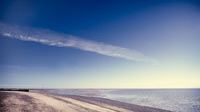
There are numerous reasons to post-produce an image. At its most moderate it's a process of tidying up minor problems (e.g. dust spots), maybe adding a touch more contrast, and so on. Tweaking reality, if you like. At the other extreme, as I discussed in relation to the structure of light, it's a case of pre-visualising the final image and then shooting a deliberately mundane exposure in order to create a more dramatic image in post. In this case the post-production is more about creating a new reality rather than tweaking an existing one. And if you're interested, 'the structure of light' is the image I'll be discussing in my next Creative Workflow tutorial, due out before the end of this month.
Between these two extremes though are images such as this one: where the shift between the original and final image is clearly significant, but not quite as dramatic. If you take a look at the original you will see what I mean:
.../archives/seeing_the_light.php
For me, the important thing here is not how a particular change was made, but why. So, for example, you could ask me about the technical changes I made to this image, and I could tell you about the Channel Mixer layer I used to desaturate the sea, and the Curves I used to selectively adjust both the contrast and tone, but those questions wouldn't get you any closer to understanding why I made those changes.
To put this another way, one of the things I'm often asked is "how do you know when to stop post-producing an image?", and there isn't an easy answer to this question, at least not one that can be phrased in technical terms. The problem here is that the question can only be answered from an aesthetic point of view: it's finished when you're happy with it, when it says what you want it to say.
From a technical point of view, this can be problematic, as there is rarely a one-to-one correspondence between a specific technical change and a desired aesthetic outcome. For example, if you are aiming to produce a moody, emotively 'dark' image, then it may be the case that a large increase in contrast will help, or a vignette, or a black and white conversion, and so on. For some images these changes will work. For other images though, you will need to take a different approach.
Anyway, I'm waffling – mostly because it's a topic that I find fascinating – but also because it's a round about way of introducing the changes that I made to this image. In this instance, my aim was a simple one: to capture the feeling of being there. The visual reality, as you will have seen if you have taken a look at the original, wasn't anything special, but the feeling of being there – listening to the gentle sounds of the sea, while watching the contrail dissipate towards a bright and distant horizon – was a lot more profound. I felt at home there. Whether my edited version manages to convey any of that to you though is a different question entirely :)
|
captured camera lens focal length aperture shutter speed shooting mode exposure bias metering mode ISO flash image quality RAW converter cropped? |
2.08pm on 9/3/10 Canon 5D Mark II EF 24-70mm f/2.8L USM 30mm f/5.6 1/60 aperture priority +1 evaluative 100 no RAW ACR 16x9 |

First of all, thanks for the interesting discussion on my previous entry, regarding the merits of conventional photography versus taking an approach more closely oriented towards the post-production of the initial capture. It's not a new argument, and not one that's likely to be resolved at any point soon, if ever, but it's an interesting topic nonetheless.
Anyway, in light of that discussion, here's a shot where the original does a much better job of standing on its own merits:
Personally, I prefer the final version – it's moodier, and more about the structure and composition than the contrasting colours – but do feel free to disagree ;) The black and white conversion was done using the Channel Mixer (as described in this tutorial), then the image was toned using a Curve (as discussed here).
And in case you're wondering, this was shot with a polariser, hence the much darker sky in the top-right corner of the image.
Oh, and on a totally different matter, we're running a competition today to win a lifetime membership (and some hefty discounts) to our Photoshop tutorials. If you're interested, there's some further information here:
http://www.chromasia.com/tutorials/online/competition.php
|
captured camera lens focal length aperture shutter speed shooting mode exposure bias metering mode ISO flash image quality RAW converter cropped? |
12.17pm on 9/3/10 Canon 5D Mark II EF 24-70mm f/2.8L USM 40mm f/3p5 1/400 aperture priority +1/3 evaluative 100 no RAW ACR no |
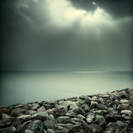
As I mentioned yesterday, one of the things that I'm going to be concentrating on this year is working with artificial light – using small strobes, light modifiers, and so on – to change the light within a scene prior to taking a shot. My reason for this is a simple one: it's something I'm not especially good at, particularly in terms of working out what I need to do to create the effect I'm aiming for.
What I'm much better at is working with light during post-production. In other words, shooting an image based on its potential to be modified after the shutter has been pressed. To my mind, both these approaches are driven by the same concerns – shaping the appearance of the world to match a specific creative vision – and both are equally valid ways in which to carry out this thing we call photography, they just occur at different points during the photographic process.
If you take a look at the original image you will see why this one falls squarely within the 'shoot now, modify later' category: it's a dull, flat shot that seems to lack any intrinsic merit.
.../archives/the_structure_of_light.php
Following two related sets of adjustments though (selective contrast enhancements and global toning) it has become a lot more striking. The trick, such as it is, is being able to imagine how a scene could look once adjusted in post, and then shooting it with these adjustments in mind. In this sense then it's much the same as using artificial light: you just need to be able to imagine the final image. With practice, everything else will follow.
If you're interested, I'll be looking at this particular image in a lot more detail in Creative Workflow #4, my latest tutorial. It's not finished yet, but will be published before the end of this month. Further details regarding our this series can be seen here:
http://www.chromasia.com/tutorials/online/cw_info.php
|
captured camera lens focal length aperture shutter speed shooting mode exposure bias metering mode ISO flash image quality RAW converter cropped? |
2.23pm on 27/2/10 Canon 5D Mark II EF 24-70mm f/2.8L USM 27mm f/8.0 1/400 aperture priority +2/3 evaluative 100 no RAW ACR 1x1 |
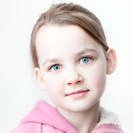
As I mentioned when I posted my previous entry, my shot of the merged flags marks a transition between one stage in my photography and the next: one that will shift the nature of at least some of the shots that I post here. In essence, the change is a simple one: rather than relying on natural light, or the haphazard and often ill-conceived application of off-camera lighting, I'm going to be spending a lot more time working on how to use light to create technically competent and aesthetically interesting images.
My overall aim is a simple one: 12 months from now I'd like to in the position where either David Hobby or Zack Arias email me to say "hey, that's cool – how did you do that?" ;) It's not going to happen – I'm sure that both of them are more than capable of reverse-engineering even the most complex of one of Joe McNally's epic set-ups – but I'd rather aim high, and not get there, than meet an easily achievable goal that doesn't require a great deal of effort.
So, to start the ball rolling, here's a shot of Harmony that was lit by a combination of window light (to the right) and a 41" shoot-through/translucent umbrella: placed three feet away and 45° to the left, about one foot above my daughter's eye-line. The light source was a Canon 580 EX II set to 1/4 power.
It's a very simple start, and one that echoes a lot of my natural light shots (flat, uniform lighting), but it's definitely a step along the road: not least because I now know that the catchlight from a shoot-through umbrella at close range isn't especially attractive ;)
I should also add that I'll be posting the originals of each of these shots. 12 months from now I'd like to think that there won't be a great deal of difference between the version I post and the one that I shoot. For the time being though I suspect that most will need some additional work.
.../archives/lighting_diary_1.php
|
captured camera lens focal length aperture shutter speed shooting mode exposure bias metering mode ISO flash image quality RAW converter cropped? |
11.15am on 18/3/10 Canon 5D Mark II EF 24-70mm f/2.8L USM 66mm f/4.0 1/100 manual n/a evaluative 100 580 EX II (1/4 power) RAW ACR 1x1 |
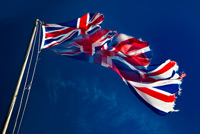
For reasons that I'll explain when I post my next entry, this image marks a transition: a state change, both in terms of what I'll be posting, and the ways in which I want to develop my photography for the foreseeable future. Watch this space :)
As for this one: it's a composite shot of five originals, none of which were sufficiently interesting to post on their own but, when combined, create something that's visually more interesting.
As always, I'd be interested to hear your thoughts.
|
captured camera lens focal length aperture shutter speed shooting mode exposure bias metering mode ISO flash image quality RAW converter cropped? |
1.40pm on 9/3/10 Canon 5D Mark II EF 24-70mm f/2.8L USM 70mm f/4.0 1/320 (or thereabouts) aperture priority -1/3 evaluative 100 no RAW ACR kind of |
| Tweet |
|

|
|
| • 3x2 + digital art | |||
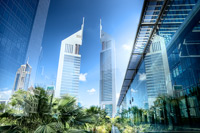
While I have become somewhat disenchanted with over-the-top HDR images, it is a technique I'm continuing to explore, not least because it does enable you to produce images that are impossible (or very difficult) to create by any other means. If you take a look at the metered exposure, linked below, you will see what I mean, i.e. the foreground and the area to the right of the image are both very dark.
.../archives/emirates_towers.php
The final image, as you can see, is considerably more vibrant, and the tonal range is more balanced. In short then, in my opinion at least, it's a technique that's great for this type of scene.
Oh, and this is a shot of the Emirates Towers, shot from the DIFC in Dubai.
On a totally different matter: we're currently running a competition to win a lifetime membership to our Photoshop tutorials. If you'd like to take part the details are linked below:
http://www.chromasia.com/tutorials/online/competition.php
|
captured camera lens focal length aperture shutter speed shooting mode exposure bias metering mode ISO flash image quality RAW converter cropped? |
9.41am on 4/3/10 Canon 5D Mark II EF 24-70mm f/2.8L USM 25mm f/16 1/15, 1/60, and 1/250 aperture priority +0.0 evaluative 100 no RAW Photomatix Pro no |
| Tweet |
|

|
|
| • 3x2 + HDR + travel [Dubai, UAE] | |||

Here's another shot I took while in Dubai a couple of weeks ago, and beyond that I'm not going to tell you anything about it as I'm using it as the basis for our latest competition to win a lifetime membership to our Photoshop tutorials. If you're interested, there's some further information linked below:
http://www.chromasia.com/tutorials/online/competition.php
|
captured camera lens focal length aperture shutter speed shooting mode exposure bias metering mode ISO flash image quality RAW converter cropped? |
12.22pm on 1/3/10 Canon 5D Mark II EF 70-200mm f/2.8L IS USM 200mm f/2.8 1/1600 aperture priority +2/3 evaluative 100 no RAW ACR 16x9 |
| Tweet |
|

|
|
| • 16x9 + travel [Dubai, UAE] + abstract + show the original | |||
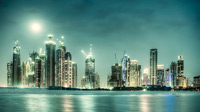
This is my third and final shot of Jumeirah beach (the first two are here and here). Unlike the previous two, this one is an HDR image, processed with Photomatix Pro. In this instance my reason for doing this was to ensure that I captured a full range of tones in both the lightest and darkest areas of the image, i.e. no blocked shadows, no clipped highlights. Of the three, I prefer the level of detail in this one, but think that the first one I posted is probably my favourite of the set. Let me know what you think.
The metered exposure is here:
.../archives/jumeirah_beach_3.php
There wasn't anything especially complex of difficult about the post-production, but if you're interested I cover most of the relevant techniques in my Photoshop for night photography and Toning colour images tutorials. The HDR process is covered in High Dynamic Range images: part two.
|
captured camera lens focal length aperture shutter speed shooting mode exposure bias metering mode ISO flash image quality RAW converter cropped? |
18.40pm on 27/2/10 Canon 5D Mark II EF 24-70mm f/2.8L USM 30mm f/5.6 1s, 4s, and 16s aperture priority +0.0 evaluative 100 no RAW Photomatix Pro 16x9 |
| Tweet |
|

|
|
| • 16x9 + HDR + travel [Dubai, UAE] | |||

Meet Wendy.
We met Wendy and her husband in Bulgaria – they live in a village on the opposite side of the valley from us – but Wendy is currently back in the UK after being diagnosed with breast cancer for the second time in 20 years. She's currently part way through a course of chemotherapy, which will be followed by another 12 months of treatment with Herceptin, so will be staying in the UK for the foreseeable future.
As you can see though, she's not letting it get her down :)
|
captured camera lens focal length aperture shutter speed shooting mode exposure bias metering mode ISO flash image quality RAW converter cropped? |
4.22pm on 12/3/10 Canon 5D Mark II EF 70-200mm f/2.8L IS USM 120mm f/4.0 1/60 aperture priority +1/3 evaluative 400 no RAW ACR minor |
| Tweet |
|

|
|
| • 3x2 + people [portraiture] + no print | |||
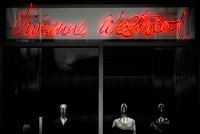
As you can see from the original image, linked below, this was one of those shots that seemed to have some potential – the bright sign, the unusual mannequins, and so on – but the straight shot just didn't work out. The light was flat, the colours were dull, and the reflections were overly distracting. With a bit of work though, including the selective desaturation (which isn't a technique I'm normally all that keen on), I ended up with something that more closely matched what I had in mind when I first spotted the scene.
The original is here:
.../archives/vivienne_westwood.php
On a totally different matter: I'm heading back to Bulgaria today, and will probably be just about to land at Sofia as this entry goes live. I'm not looking forward to the trip – not least because I'll have spent most of last night at Manchester airport waiting to check in – but am really looking forward to seeing Libby and the kids. I've been away for over two weeks now, which is just a bit too long.
And finally: I'll be spending some time next week shooting portraits of our youngest daughter, so watch out for those at some point from around Wednesday onwards.
|
captured camera lens focal length aperture shutter speed shooting mode exposure bias metering mode ISO flash image quality RAW converter cropped? |
2.37pm on 1/3/10 Canon 5D Mark II EF 70-200mm f/2.8L IS USM 150mm f/2.8 1/250 aperture priority +1/3 evaluative 100 no RAW ACR minor transformation |
| Tweet |
|

|
|
| • 3x2 + travel [Dubai, UAE] | |||
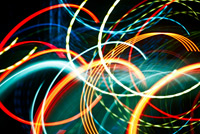
It's not often that I'm a passenger in a car at night, but when I am I often sit there shooting out of the window, just playing around with the lights. 99 times out of a 100 I end up with pretty much what you'd expect – a blurry load of crap – but every once in a while I do get one that I like.
If you're interested, the original is here:
The post-production was mostly carried out in Camera Raw: I added some contrast and shifted the hue of some of the colours to broaden the colour palette.
On a different matter: if you didn't read my previous entry, I posted my initial thoughts on Topaz Detail, a plugin that does a great job of bringing out the detail in an image without introducing any obvious processing artefacts. If you haven't tried it I'd definitely suggest that you download the demo version and try it out.
|
captured camera lens focal length aperture shutter speed shooting mode exposure bias metering mode ISO flash image quality RAW converter cropped? |
9.07pm on 27/2/10 Canon 5D Mark II EF 24-70mm f/2.8L USM 70mm f/2.8 0.3s aperture priority +0.0 evaluative 100 no RAW ACR no |
| Tweet |
|

|
|
| • 3x2 + travel [Dubai, UAE] + abstract + night shots | |||
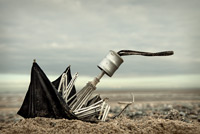
I've got some more shots that I'm going to post from my trip to Dubai, but I thought I'd put this one up first: taken this morning on Fleetwood beach. If you've seen my beachcombing gallery you'll know that I have quite a few shots of lost and abandoned items that I've found on that beach, but I think that this one has to be one of my all time favourites (though I'd be hard pressed to tell you why).
In terms of the post-production ...
This one was relatively straightforward, other than that I merged two exposures: the metered exposure, and a second shot that was over-exposed by 1 2/3 EV (I used this to bring out the detail in the darker areas of the umbrella).
I also used Topaz Detail, a Photoshop plugin from Topaz Labs, to bring out the fine scale detail in both the umbrella and the sand. If you haven't tried this plugin, I'd highly recommend it, as it does an absolutely superb job of bringing out the detail in an image without introducing any obvious processing artefacts.
If you're interested, I've posted some before and after shots of a crop from the high res' image here:
http://www.chromasia.com/iblog/archives/Untitled_0095.php
I don't often recommend plugins, not least because I much prefer working out how to achieve a particular within Photoshop, but none of the Photoshop techniques that I know (USM with a large radius, High Pass Sharpening, and so on) come close to those you can achieve with Topaz Detail. If you're interested, this is a topic I covered in my latest tutorial. Anyway, download the demo version and try it for yourself.
|
captured camera lens focal length aperture shutter speed shooting mode exposure bias metering mode ISO flash image quality RAW converter cropped? |
11.40pm on 9/3/10 Canon 5D Mark II EF 24-70mm f/2.8L USM 45mm f/5.6 1/400 (and 1/200) aperture priority +2/3 evaluative 100 no RAW ACR no |
| Tweet |
|

|
|
| • 3x2 + beachcombing | |||
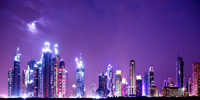
It's now Sunday, and I'm back in the UK for a week before heading back to Bulgaria. As always, Gulf Photo Plus was a lot of fun, not least because I got to meet up with some old friends from previous years, including: Bobbi Lane, Chris Hurtt, Robin Nichols, Joe McNally, Zack Arias, David Hobby, Mohamed Somji, and Hala Salhi. It was also a real pleasure to meet the new instructors at this year's event: Joey Lawrence, Vincent LaForet, Matt Kloskowski, Melissa Rodwell and Steve Simon.
If you're not familiar with the event, it's organised around a series of workshops. For example, Zack does a one-light workshop (amongst other things), I do a range of shooting and post-production sessions, Vincent did a week long session on using the 5D II to shoot video, and so on. There's also quite a lot of socialising, most notably at the Vista Bar on the roof of our hotel, and a range of other events, sessions, exhibitions, and so on.
One of the highlights of this year's event was a live shoot-out between Zack Arias, David Hobby and Joey Lawrence that took place during the closing ceremony. Each of them had 25 minutes to shoot and post-process a shot of two models, in front of an audience of several hundred photographers and students. David went first, and used about six "voice activated" light-stands (aka people with cameras and flash guns that were slaved to David's camera) to create a great, paparazzi style shot of the models. I don't think he's posted it online yet, but I'll link through when he does. Zack used three lights, and created an equally stunning shot. Joey, on the other hand, went for a slightly less sophisticated approach and shot a polaroid.
Update: David's take on the shoot-out is here:
http://strobist.blogspot.com/2010/03/speedlights-at-twenty-paces.html
Anyway, I'll tell you more about the event and everything else that went on later this week, but for now, here's another shot of the Jumeirah beach taken while I was out with Catalin Marin and Robin Nichols. The content is fairly similar to the previous one I posted, but I decided to process this one in a slightly different way. As always, let me know what you think.
Oh, and if you've been following my Facebook updates you'll know that ended up in the Emirates hospital on Friday evening, suffering from disturbingly painful stomach cramps. I'm still not quite sure what the problem was, but after taking a variety of tablets for a couple of days I now feel a whole lot better. At which point I should definitely thank Khaled for driving me to the hospital and Miriam for driving out there too to look after me.
|
captured camera lens focal length aperture shutter speed shooting mode exposure bias metering mode ISO flash image quality RAW converter cropped? |
18.54pm on 27/2/10 Canon 5D Mark II EF 24-70mm f/2.8L USM 30mm f/5.6 13s aperture priority +1 evaluative 100 no RAW ACR 2x1 |
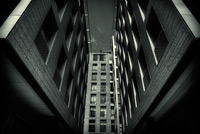
It's now day three of Gulf Photo Plus 2010 and I'm about to start my landscape photography workshop. We're heading out to the desert this afternoon, and then back to the DIFC for an urban landscape shoot tomorrow morning. After that it's back to the lab for some post-production training. I'm really looking forward to it.
As for this shot: it was taken down at the Gate Village down at the DIFC and is an HDR, constructed from three exposures (-2 EV to + 2 EV) using Photomatix Pro.
If you're interested, the metered exposure for this sequence is here:
.../archives/gate_village_1.php
|
captured camera lens focal length aperture shutter speed shooting mode exposure bias metering mode ISO flash image quality RAW converter cropped? |
1.54pm on 1/3/10 Canon 5D Mark II EF 24-70mm f/2.8L USM 24mm f/4.4 1/125, 1/500, and 1/2000 aperture priority +1 evaluative 100 no RAW Photomatix Pro minor |
| Tweet |
|

|
|
| • 3x2 + HDR + travel [Dubai, UAE] | |||
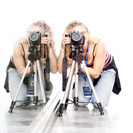
It was the first day of the 2010 Gulf Photo Plus workshops today, and I had a great time. I was down at the Dubai International Financial Centre (DIFC), who were kind enough to host our HDR location shoot and, although I haven't seen many of their images yet, I'm pretty sure my students got some great shots. Catalin Marin has already posted his first one, and I'm sure that plenty more will appear over the next day or so ... including some of my own.
In the meanwhile, here's a shot of one of my students, taking an exposure sequence underneath the DIFC.
On which note, I'm hitting the sack as I have a full day in the labs tomorrow: HDR post-production in the morning, and ‘enhancing portraits’ in the afternoon. It's going to be a fun day :)
|
captured camera lens focal length aperture shutter speed shooting mode exposure bias metering mode ISO flash image quality RAW converter cropped? |
11.42am on 27/2/10 Canon 5D Mark II EF 24-70mm f/2.8L USM 70mm f/4.0 1/40 aperture priority +2 evaluative 100 no RAW ACR 1x1 |
| Tweet |
|

|
|
| • 1x1 + travel [Dubai, UAE] + people [portraiture] + no print | |||